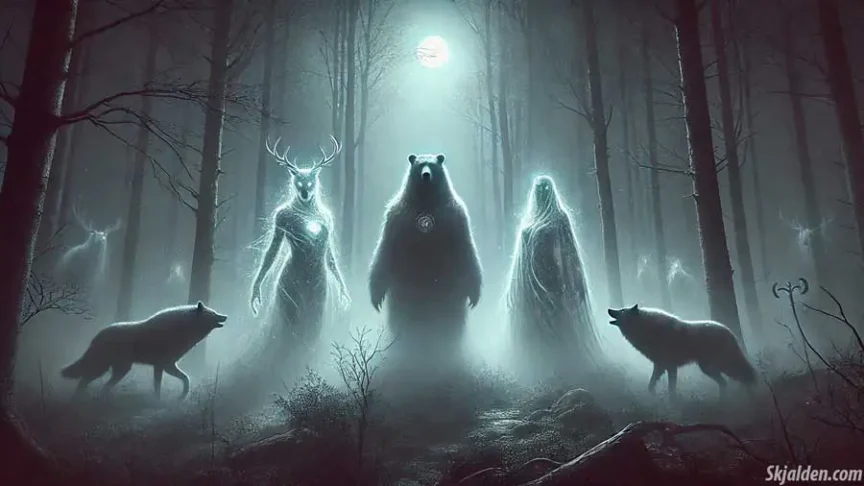In Norse mythology, the concept of a Fylgja, which translates to “follower,” represents a unique spiritual guardian connected to a person’s life force and fate. These entities, often visualized as animals or sometimes as human figures, serve as protectors to individuals and families, influencing their fortunes and providing foresight into their futures. The belief in Fylgja reveals the Norse people’s deep connection with the mystical elements of their world, where every person is thought to have a spirit companion that mirrors their inner self and destiny.
Historical Significance and Notable Examples
The Role of Fylgja in Daily Norse Life
For the Norse, the presence of a Fylgja was a fact of life, woven into their understanding of the world around them. These spirits were not just fanciful creations but were integral to the Norse understanding of life and death. People believed that seeing one’s Fylgja often meant that a significant life event was imminent, usually warning of danger or even foretelling death. This belief underscores the Norse view that life was a cycle deeply connected to the spiritual realm and that these connections were to be respected and heeded.
Fylgjur varied in form, typically appearing as animals that represented the character or essence of the individual. For example, a warrior might be followed by a bear or a wolf, symbolizing strength and ferocity, while a sage might be associated with a raven, symbolizing wisdom. These spiritual entities were thought to appear in dreams, providing guidance or warnings about future challenges or opportunities. The relationship between a Norse individual and their Fylgja was deeply personal and viewed as a reflection of their identity and fate.
Notable Figures and Their Fylgjur
Several historical and mythical Norse figures are noted to have had significant interactions with their Fylgjur. For instance, King Olaf Tryggvason, a ruler known for his efforts to Christianize Norway, was said to have visions of his Fylgja, which appeared as a fierce animal, guiding and protecting him in battles. Another example is the legendary hero Egil Skallagrimsson, whose saga includes references to his Fylgja providing him with premonitions that saved his life multiple times.
These stories are more than mere legends; they offer insight into how the Norse viewed fate and individuality. The Fylgja is not only connected to a person’s spirit but also to their lineage, passing down through generations. This aspect highlights the ancestral reverence in Norse culture, emphasizing the continuity between past, present, and future, and the role of the Fylgja in maintaining this continuum.
Fylgja in Norse Festivals and Rituals
The importance of Fylgja extended into Norse rituals and festivals, particularly those that honored the deceased and the ancestral spirits. During such events, people would pay homage to their family’s Fylgja, thanking them for protection and guidance. This practice was part of a larger cultural framework that celebrated the interconnectedness of life, death, and the spiritual world, demonstrating the holistic view the Norse had of existence.
In summary, the Fylgja in Norse mythology encapsulates the profound relationship between humans and the supernatural, serving as both protectors and guides. Their presence in the sagas and myths of the Norse people illustrates the blend of fear, respect, and reverence with which these ancient peoples viewed the mystical forces at work in their lives. Understanding Fylgja helps modern readers appreciate the depth and complexity of Norse spiritual beliefs and the cultural importance of these guardian spirits.
